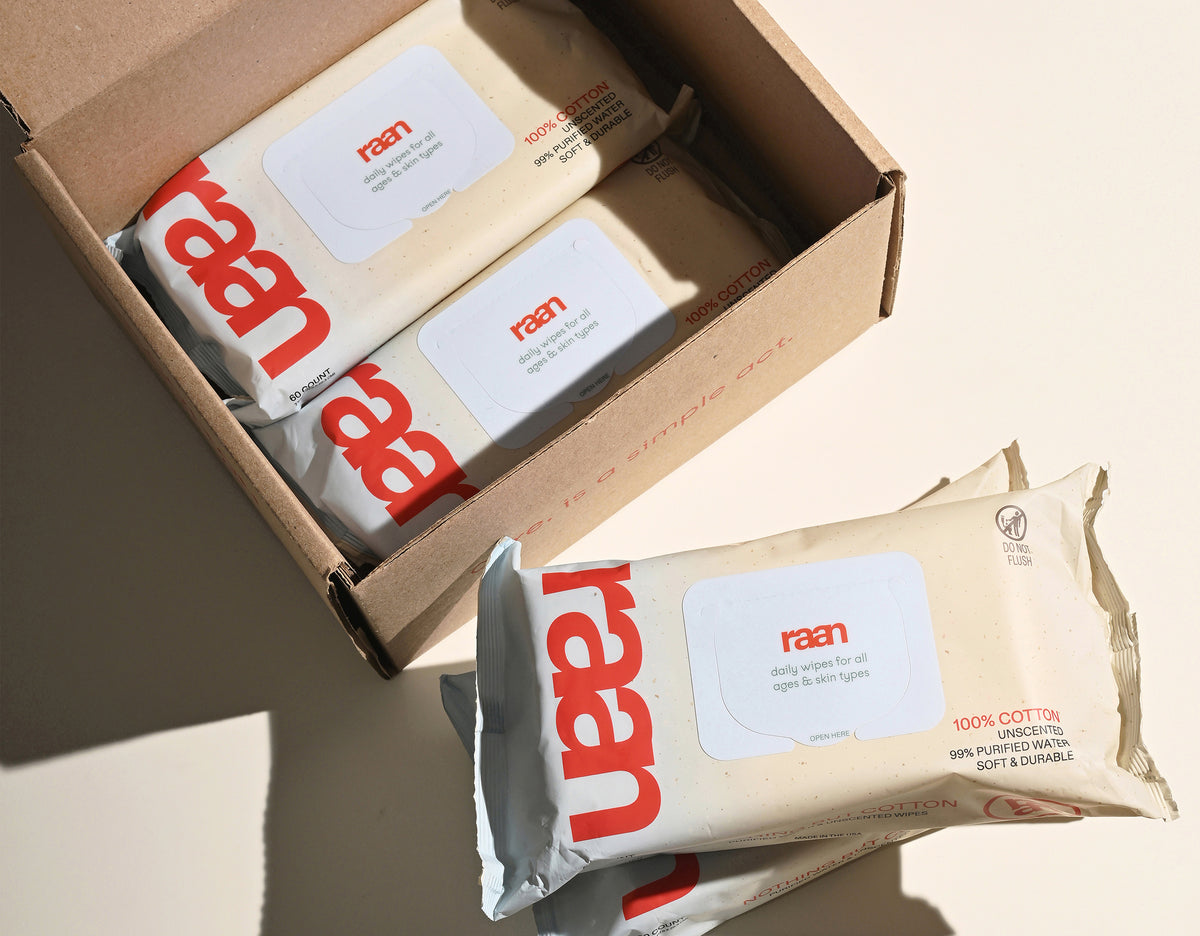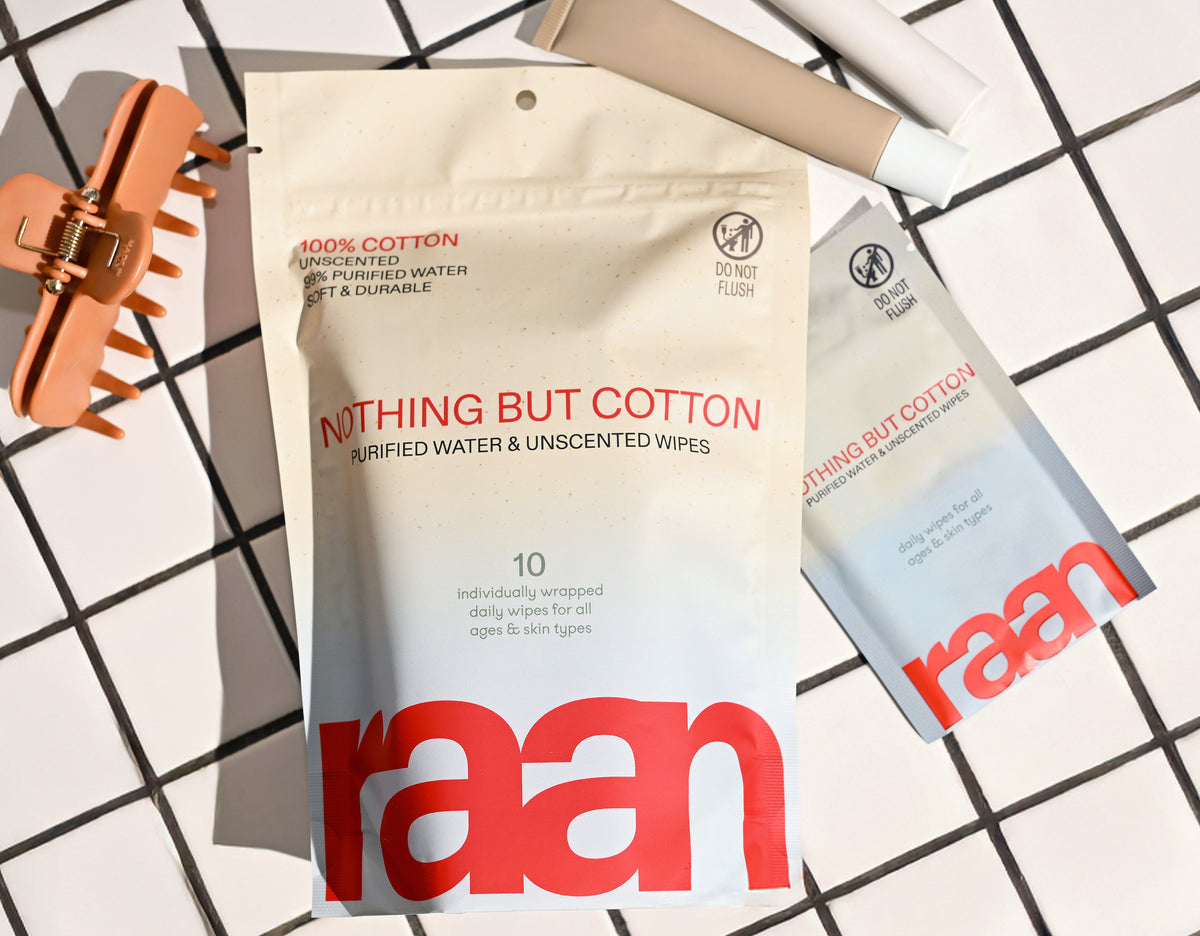Key Takeaways
- Choosing baby wipes can be overwhelming due to the many options available.
- The best baby wipes have simple, skin-safe ingredients rather than long ingredient lists.
- Unbleached, 100% cotton wipes are preferred for their natural and gentle qualities.
- Effective baby wipes focus on real function rather than bold marketing claims.
Table of Contents
- What Are Baby Wipes? The Basics You Need to Know
- Breaking Down the Ingredients, What's Really in Baby Wipes?
- How to Choose the Best Baby Wipes for Your Family
- Baby Wipe Comparisons, Key Differences Explained
- How to Use, Store, and Dispose of Baby Wipes the Right Way
- Troubleshooting Common Baby Wipe Issues
- Beyond Diaper Changes: Maximizing Baby Wipe Versatility
- Making Confident Wipe Choices for Your Family
The Honest Guide to Baby Wipes: Real Function, Real Simplicity
When you're standing in the baby aisle staring at dozens of baby wipe options, the choice feels overwhelming. But here's the truth: the best baby wipes aren't the ones with the longest ingredient lists or the boldest marketing claims. They're the ones made with unbleached, 100% cotton and just a few skin-safe ingredients that actually serve a purpose.
Baby wipes have evolved far beyond diaper duty. Today's families use them for sticky fingers, muddy paws, quick face cleanups, and countless everyday messes. Yet most wipes on the market are still made with plastic fibers and packed with unnecessary additives that can irritate sensitive skin. For on-the-go convenience, consider a 100% cotton pocket wipe for sensitive skin that fits easily in your bag or car.
This guide cuts through the confusion with facts, not fluff. You'll learn what's really in baby wipes, how to choose options that work for your family's needs, and why material matters more than marketing when it comes to gentle, effective cleaning.
What Are Baby Wipes? The Basics You Need to Know
Baby wipes are pre-moistened cloths designed primarily for cleaning sensitive skin during diaper changes. But their versatility extends far beyond the changing table, they're everyday essentials for quick cleanups, travel hygiene, and gentle care for all ages.
The core components are simple: a fabric base (cotton or synthetic) soaked in a liquid solution that's typically 99% water. The remaining 1% includes preservatives to prevent bacterial growth, gentle moisturizers like organic aloe, and pH-balancing ingredients like citric acid. The best options use unbleached, 100% cotton as the fabric base, avoiding the plastic fibers found in conventional wipes.
Who Benefits from Quality Baby Wipes
- Newborns and toddlers: Gentle enough for the most delicate skin
- Adults with sensitive skin: Hypoallergenic formulas reduce irritation risk
- Pet owners: Safe for cleaning muddy paws and minor messes
- Busy families: Quick solution for sticky hands, faces, and surfaces
Real-world uses extend to post-meal cleanups, travel refreshment, gym bag essentials, and even light skincare routines. The key is choosing wipes made with materials and ingredients that match their versatile function, gentle enough for faces, strong enough for messes, and honest enough to trust.
Breaking Down the Ingredients, What's Really in Baby Wipes?

Understanding what goes into a baby wipe helps you make informed choices for your family. The best formulations keep it simple: purified water as the base (up to 99%), plus a handful of ingredients that each serve a clear purpose.
Food-grade preservatives like sodium benzoate and potassium sorbate prevent bacterial growth without harsh chemicals. Ethylhexylglycerin acts as a skin-conditioning agent, while organic aloe provides gentle moisturizing. Citric acid balances pH to support healthy skin. Each ingredient in quality wipes earns its place through function, not filler.
| Ingredient | Function | EWG Status | Why It Matters |
|---|---|---|---|
| Purified Water | Cleansing base | Verified | Gentle, effective cleaning without irritation |
| Sodium Benzoate | Food-grade preservative | Verified | Prevents bacterial growth safely |
| Organic Aloe | Moisturizer | Verified | Soothes and conditions skin |
| Citric Acid | pH balance | Verified | Maintains skin-healthy acidity |
What's notably absent from quality formulations matters just as much: no plastic fibers, synthetic fragrances, bleach, or harsh chemicals. This minimalist approach reduces the risk of irritation, especially important for newborns and those with sensitive skin conditions. For more details on what to look for, check out this guide on best baby wipes for sensitive skin.
How to Choose the Best Baby Wipes for Your Family
Start by assessing your specific needs. Consider who will use the wipes most, newborns require the gentlest formulations, while families with pets might prioritize durability. Factor in any history of skin sensitivity, eczema, or allergic reactions when evaluating ingredients.
Look for transparency in ingredient lists. The best baby wipes clearly explain what each component does and why it's included. Certifications like EWG Verified, Natural Cotton Seal, and Cruelty Free provide independent verification of safety claims. Avoid vague terms like "natural" or "pure" without specific backing.
Material Matters Most
Unbleached, 100% cotton wipes offer superior gentleness and strength compared to plastic-fiber alternatives. They're naturally hypoallergenic, biodegradable, and free from microplastics that can irritate sensitive skin.
Consider packaging impact alongside product quality. Options with 70% less plastic packaging, achieved by skipping the hard plastic lid, help reduce waste without sacrificing convenience. Look for pouches made with post-consumer recycled content and fully recyclable boxes to further minimize your environmental footprint.
Baby Wipe Comparisons, Key Differences Explained
Understanding the differences between baby wipe types helps you choose the right option for your family's needs. From materials to formulations, each category serves specific purposes with distinct advantages.
Baby Wipes vs. Adult Wipes
Best for: Understanding when to use specialized formulations
Baby wipes prioritize gentleness with thicker, softer materials and minimal ingredients designed for delicate skin. Adult wipes often include stronger cleansing agents, alcohol, or fragrances that can irritate sensitive areas. The size difference matters too, baby wipes are typically smaller for precise cleaning during diaper changes, while adult wipes cover more surface area for body cleansing.
Baby wipes with unbleached, 100% cotton offer superior softness compared to adult alternatives that may use synthetic blends. The formulation difference is crucial: baby wipes focus on 99% water bases with food-grade preservatives, while adult versions may include harsher chemicals unsuitable for newborn skin.
Water-Based (99% Water) vs. Traditional Baby Wipes
Best for: Newborns and extremely sensitive skin
Water-based wipes contain minimal ingredients, typically purified water, organic aloe, and food-grade preservatives like sodium benzoate and potassium sorbate. Traditional baby wipes may include additional moisturizers, thickening agents, or synthetic preservatives that increase irritation risk for reactive skin.
The simplicity of water-based formulations reduces the chance of allergic reactions while maintaining effective cleansing. EWG Verified options ensure every ingredient meets strict safety standards, offering peace of mind for parents navigating sensitive skin concerns. For a deeper dive into the topic, read this overview of best baby wipes.
| Feature | Water-Based Wipes | Traditional Baby Wipes | Adult Wipes | Reusable Wipes |
|---|---|---|---|---|
| Primary Ingredients | 99% water, minimal additives | Water plus multiple moisturizers | Alcohol, fragrances, cleansers | Fabric only |
| Skin Sensitivity | Hypoallergenic, newborn-safe | Generally gentle | May cause irritation | Depends on detergent used |
| Material Options | Unbleached cotton available | Mixed materials common | Often synthetic blends | Various fabric choices |
| Disposal Impact | Biodegradable options | Varies by brand | Less eco-friendly | Washable, reusable |
| Best Use Case | Sensitive skin, newborns | General baby care | Adult personal care | Eco-conscious families |
Disposable vs. Reusable Baby Wipes
Best for: Weighing convenience against environmental impact
Disposable wipes offer unmatched convenience for diaper changes, travel, and quick cleanups. They're pre-moistened, individually dispensed, and require no preparation or washing. Reusable options demand more effort, washing, drying, and re-moistening, but eliminate ongoing waste.
From a hygiene perspective, disposable wipes ensure fresh, clean material for each use. Reusable wipes require careful laundering to prevent bacterial buildup, especially when dealing with diaper messes. For families prioritizing convenience during newborn stages or frequent travel, disposable wipes with biodegradable materials like unbleached cotton offer the best balance of practicality and environmental consideration. If you're just starting out, explore the starter set for a simple introduction to quality wipes.
How to Use, Store, and Dispose of Baby Wipes the Right Way

Proper technique maximizes wipe effectiveness while preventing waste and maintaining freshness. Following these guidelines ensures you get the most value from every pack.
Using Baby Wipes Effectively
Pull one wipe at a time to preserve moisture in remaining wipes. For diaper changes, use gentle pressure and wipe from front to back, especially for girls, to prevent bacterial transfer. Use one wipe per pass, don't rewipe the same area with a soiled wipe.
Most diaper changes require 2-3 wipes: one for the initial cleanup, one for thorough cleaning, and one for a final gentle pass. Messy situations may need more, but using fresh wipes for each area prevents spreading bacteria and reduces skin irritation.
Storage Tip: Always reseal wipe packs immediately after use. Store flat in temperature-controlled areas, avoid hot cars, direct sunlight, or humid bathrooms where heat can dry out wipes or promote bacterial growth.
Disposal Guidelines
Never flush baby wipes, regardless of packaging claims about "flushability." All wipes, even biodegradable cotton ones, can clog plumbing and contribute to environmental issues if flushed. Dispose of used wipes in the trash. If your wipes are made from unbleached, 100% cotton and contain only minimal, EWG-verified ingredients, they will break down more readily in landfills compared to plastic-based alternatives.
Troubleshooting Common Baby Wipe Issues
Even the gentlest baby wipe can cause problems if it's not the right fit for your skin or situation. Here's how to solve the most frequent wipe-related challenges without switching to harsh alternatives.
When Rashes or Irritation Occur
If your baby develops redness or bumps after using wipes, the culprit is usually an unnecessary additive. Switch to wipes with shorter ingredient lists, ideally just purified water, food-grade preservatives, and organic aloe. Unbleached, 100% cotton material eliminates plastic fiber irritation that synthetic wipes can cause. For more on safety and skin reactions, see this discussion on whether Kirkland baby wipes are safe.
Test new wipes on a small patch of skin first. Apply to the inside of your baby's wrist, wait 24 hours, and check for any reaction before using during diaper changes.
Preventing Wipes from Drying Out
Wipes lose moisture when air gets into the package. Always press the seal completely closed after each use and store packs flat in a cool, dry place. Avoid leaving them in hot cars or sunny windowsills.
If wipes have already dried out, you can rehydrate them by adding a small amount of purified water to the pack. Seal and let sit for several hours, then redistribute the moisture by gently pressing the pack.
Dealing with Weak or Tearing Wipes
Thin wipes that tear during use create more waste and frustration. Look for wipes made from 100% cotton rather than synthetic blends, cotton fibers are naturally stronger and more durable when wet. The weave and thickness matter more than the brand name.
Pull wipes slowly from the package to avoid unnecessary stress on the material. If you're consistently going through multiple wipes per change due to tearing, it's time to upgrade to a more durable option. For additional scientific insight into skin reactions and wipe safety, review this peer-reviewed study on baby wipes and skin health.
Beyond Diaper Changes: Maximizing Baby Wipe Versatility
The same gentle formulation that makes a baby wipe safe for newborn skin works perfectly for countless other situations. Understanding these applications helps you get more value from every pack.
Quick Household Clean-Ups
Baby wipes excel at cleaning sticky surfaces, dusty electronics, and pet messes. The 99% water base won't leave residue on screens or damage sensitive surfaces. Keep a pack in your kitchen for high chair clean-up and counter spills. For families who need wipes ready for any mess, try the mess-ready pack for maximum versatility.
Smart Storage Tip: Store travel packs in your car's glove compartment, gym bag, and purse. The compact size and resealable packaging make them perfect for on-the-go situations where soap and water aren't available.
Personal Care for All Ages
Adults with sensitive skin benefit from the same gentle ingredients designed for babies. Use them as a quick face refresh after workouts, for removing light makeup, or cleaning hands when traveling. The hypoallergenic formulation works well for elderly care situations too.
Pet owners find baby wipes invaluable for cleaning muddy paws and wiping down fur after outdoor adventures. The safe ingredients mean you don't have to worry if your pet licks their paws afterward. For more information on the broader uses and science behind wipes, see this clinical review of baby wipe applications.
Making Confident Wipe Choices for Your Family

The best baby wipe combines material integrity, ingredient transparency, and proven safety certifications. Focus on products that prioritize function over marketing claims.
Why Certifications Matter
EWG Verified certification means every ingredient has been independently evaluated for safety, not just deemed "natural" by the manufacturer. This third-party verification eliminates guesswork about what you're putting on sensitive skin.
Look for additional certifications like Cruelty Free, Natural Cotton Seal, and Women Owned. These indicate a company's commitment to ethical practices beyond just the product formulation.
| Certification | What It Verifies | Why It Matters |
|---|---|---|
| EWG Verified | Independent ingredient safety review | Eliminates harmful chemicals |
| Natural Cotton Seal | 100% cotton fiber purity | No plastic microfibers |
| Cruelty Free | No animal testing | Ethical development process |
| Made in USA | Domestic manufacturing standards | Quality control oversight |
Sustainable Packaging Considerations
Traditional wipe packages use hard plastic lids that add unnecessary waste. Look for packs that use 70% less plastic through innovative sealing methods. Pouches containing post-consumer recycled content and fully recyclable outer boxes demonstrate genuine environmental commitment.
These packaging improvements don't compromise functionality, they often make wipes easier to access and store while reducing your household's plastic footprint.
Evaluating Long-Term Value
Quality wipes may cost more upfront, but their durability, safety, and reduced risk of irritation can save you money and worry in the long run. Choosing wipes with honest, minimalist formulas and responsible packaging means you’re investing in products that truly work for your family and the planet.
Frequently Asked Questions
What ingredients should I look for in baby wipes to ensure they are safe and gentle for sensitive skin?
Look for baby wipes with simple, skin-safe ingredients like purified water, food-grade preservatives (such as sodium benzoate and potassium sorbate), organic aloe for moisture, and citric acid to balance pH. Avoid wipes with synthetic fragrances, harsh chemicals, or unnecessary additives that can irritate sensitive skin.
Why are unbleached, 100% cotton baby wipes considered better than wipes made with synthetic fibers?
Unbleached, 100% cotton wipes are preferred because they are natural, breathable, and free from plastic fibers that can irritate skin. They offer gentle cleaning without the risk of microplastics and preserve the fabric’s natural qualities, making them safer and more comfortable for delicate skin.
How can baby wipes be used beyond diaper changes in everyday family life?
Baby wipes are versatile tools for quick cleanups beyond diaper duty, they work well for wiping sticky fingers, cleaning muddy paws, refreshing faces on the go, and handling countless everyday messes. Their gentle formula and natural materials make them safe for all ages and uses around the home.
What are the best practices for storing and disposing of baby wipes to maintain hygiene and environmental safety?
Store baby wipes in a sealed pouch or container to keep them moist and prevent contamination. Dispose of wipes in the trash rather than flushing to avoid plumbing issues and environmental harm. Choosing wipes with minimal plastic packaging and recyclable boxes also supports better environmental care.






